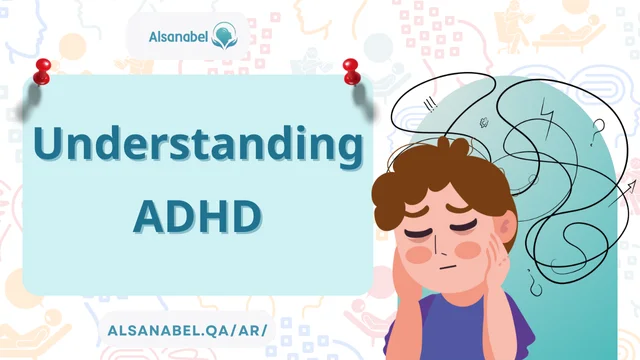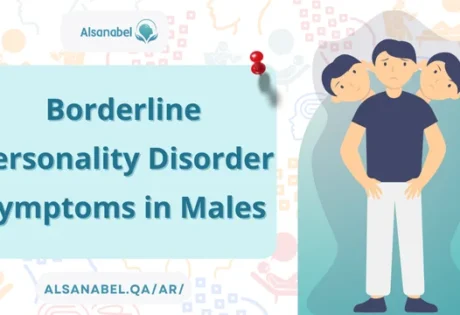
ADHD is a neurodevelopmental condition that affects millions of individuals worldwide. It is characterized by symptoms of lack of attention, impulsiveness, and hyperactivity that interfere with daily functioning and development. These challenges can manifest differently depending on age, gender, and individual circumstances, making it a highly nuanced and often misunderstood condition.
This article explores the essential aspects of it, including its symptoms, impact on daily life, and societal misconceptions. By understanding the complexities of hyperactivity disorder, we can foster greater empathy and provide better support for those living with the condition.
Understanding ADHD
It is not merely a matter of occasional distraction or excessive energy. It is a chronic condition that impacts multiple areas of life, including academic performance, relationships, and emotional well-being.

- Inattention Symptoms
- Difficulty focusing on tasks or sustaining attention in activities.
- Tendency to lose things or forget details frequently.
- Hyperactivity
- Constant movement, such as fidgeting or an inability to remain seated for extended periods.
- Impulsivity
- Acting without thinking, interrupting conversations, or making hasty decisions.
The Different Types
It is broadly categorized into three types, depending on the primary symptoms exhibited by the individual.
Inattentive Type
This form is dominated by attention deficit symptoms, where individuals struggle to focus, stay organized, or complete tasks.
Hyperactive-Impulsive Type
Marked by high levels of energy and impulsiveness, this type involves constant activity and difficulty with self-control.
Combined Type
The most common presentation, combining inattention, impulsivity, and hyperactivity in varying degrees.
How it Manifests Across Ages
It symptoms evolve with age, often becoming more nuanced in adults compared to children.
In Children
- School Performance
- Struggling to follow instructions, complete homework, or pay attention in class.
- Behavioral Challenges
- Interrupting classmates, being unable to sit still, or acting out impulsively.
In Adults
- Workplace Difficulties
- Missing deadlines, forgetting appointments, or losing important items.
- Relationship Struggles
- Misunderstandings arising from inattentiveness or impulsive reactions.
The Impact on Daily Life
Living with it presents daily challenges that can affect multiple areas of life, including education, work, and relationships.
Educational Impact
- Difficulty in Focusing
- Students with attention deficit often miss critical details, impacting their academic performance.
- Hyperactive Behaviors
- Inability to sit still can lead to disciplinary actions or feelings of isolation.
Professional Challenges
- Time Management Issues
- Adults with it may struggle to prioritize tasks or meet deadlines.
- Impulsive Decision-Making
- Acting without fully considering the consequences can affect workplace relationships.
Myths and Misconceptions
Many misconceptions surround it, contributing to stigma and misunderstanding.
- It Is Just a Lack of Discipline
- It is a neurological disorder, not a result of poor parenting or laziness.
- It Only Affects Children
- While often diagnosed in childhood, it frequently persists into adulthood.
Diagnosis and Treatment
Accurately diagnosing it involves a comprehensive evaluation by medical professionals, often incorporating input from family, teachers, or colleagues.
Diagnosis Process
- Behavioral Assessments
- Evaluating patterns of inattention symptoms, hyperactivity, and impulsivity over six months or more.
- Rule-Out Criteria
- Ensuring symptoms are not better explained by other conditions such as anxiety or learning disabilities.
Treatment Options
While there is no cure for it, effective management strategies can significantly improve quality of life.
- Medication
- Stimulants and non-stimulants are commonly prescribed to regulate focus and behavior.
- Behavioral Therapy
- Equipping individuals with coping mechanisms to navigate daily challenges.
- Lifestyle Modifications
- Establishing routines, exercise, and dietary adjustments to enhance focus and reduce hyperactivity.
Answering Common Questions

1. What challenges do people with ADHD face daily?
Individuals with it often struggle with focus, time management, emotional regulation, and maintaining relationships. These challenges can affect academic, professional, and personal aspects of their lives.
2. Can a person live with ADHD without treatment?
While some individuals may adapt without formal treatment, many benefit significantly from a combination of therapy at Al Sanabel Specialized Psychiatric Center In Qatar, medication, and lifestyle changes to manage symptoms effectively.
3. How prevalent is ADHD globally?
According to global estimates, it affects approximately 5-7% of children and 2-5% of adults, making it one of the most common neurodevelopmental disorders.
4. What are the misconceptions about ADHD?
Misconceptions include beliefs that it is caused by poor discipline, that it only affects children, or that individuals with it are less intelligent or capable.
5. What are the statistics on ADHD?
Studies indicate that boys are more likely to be diagnosed with it than girls, often due to differences in symptom presentation. Additionally, it prevalence varies across regions, influenced by cultural and diagnostic practices.
Understanding hyperactivity disorder requires a comprehensive exploration of its symptoms, challenges, and misconceptions. From recognizing the defining traits of it to addressing the stigma surrounding attention deficits, awareness is crucial for fostering empathy and support.
By identifying and managing symptoms of inattention symptom, impulsiveness, and other related behaviors, individuals with it can lead fulfilling lives. With the right interventions, education, and societal support, the barriers created by it can be significantly reduced, paving the way for success and well-being in all aspects of life.
%20(2).jpg)

